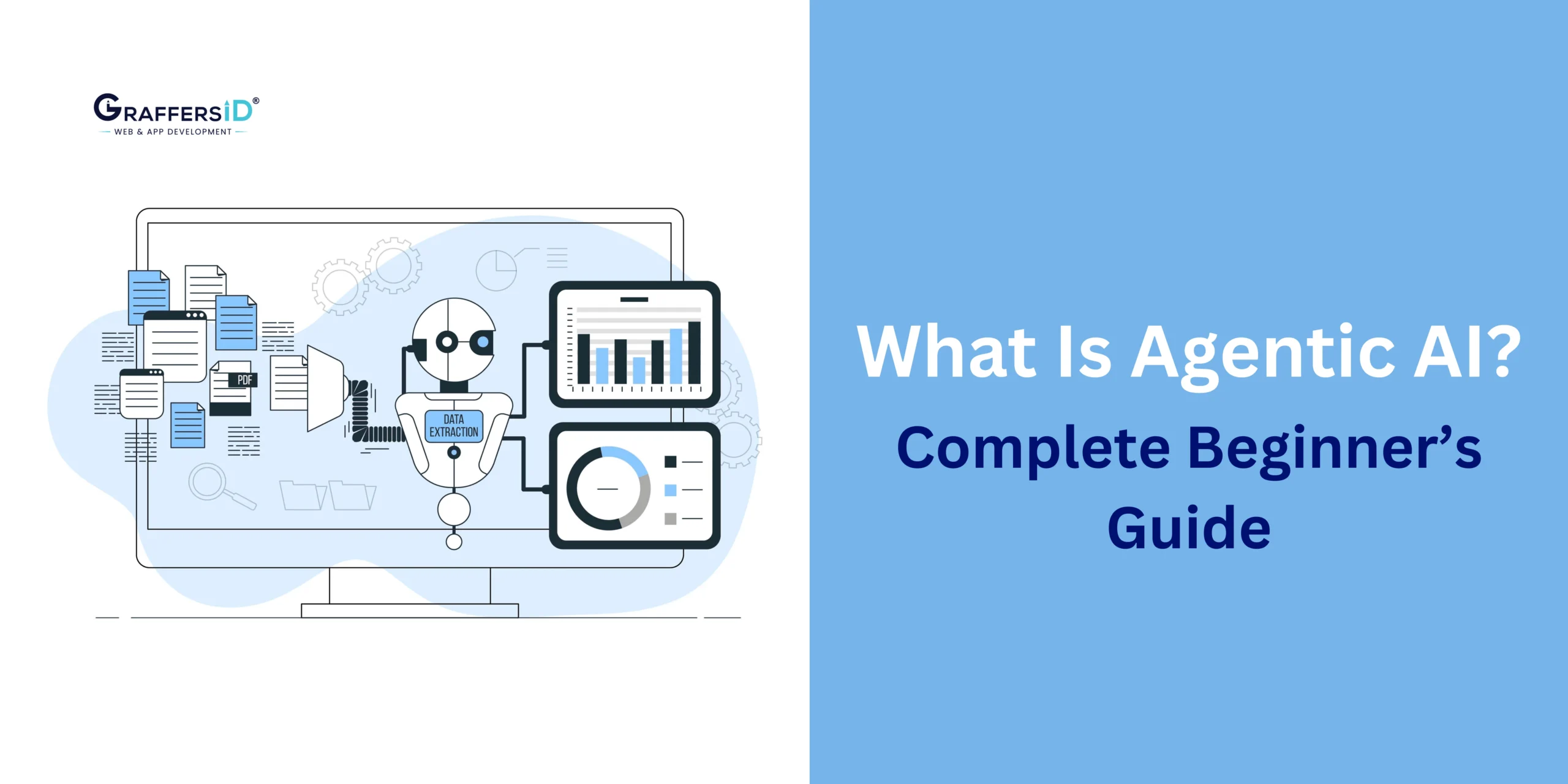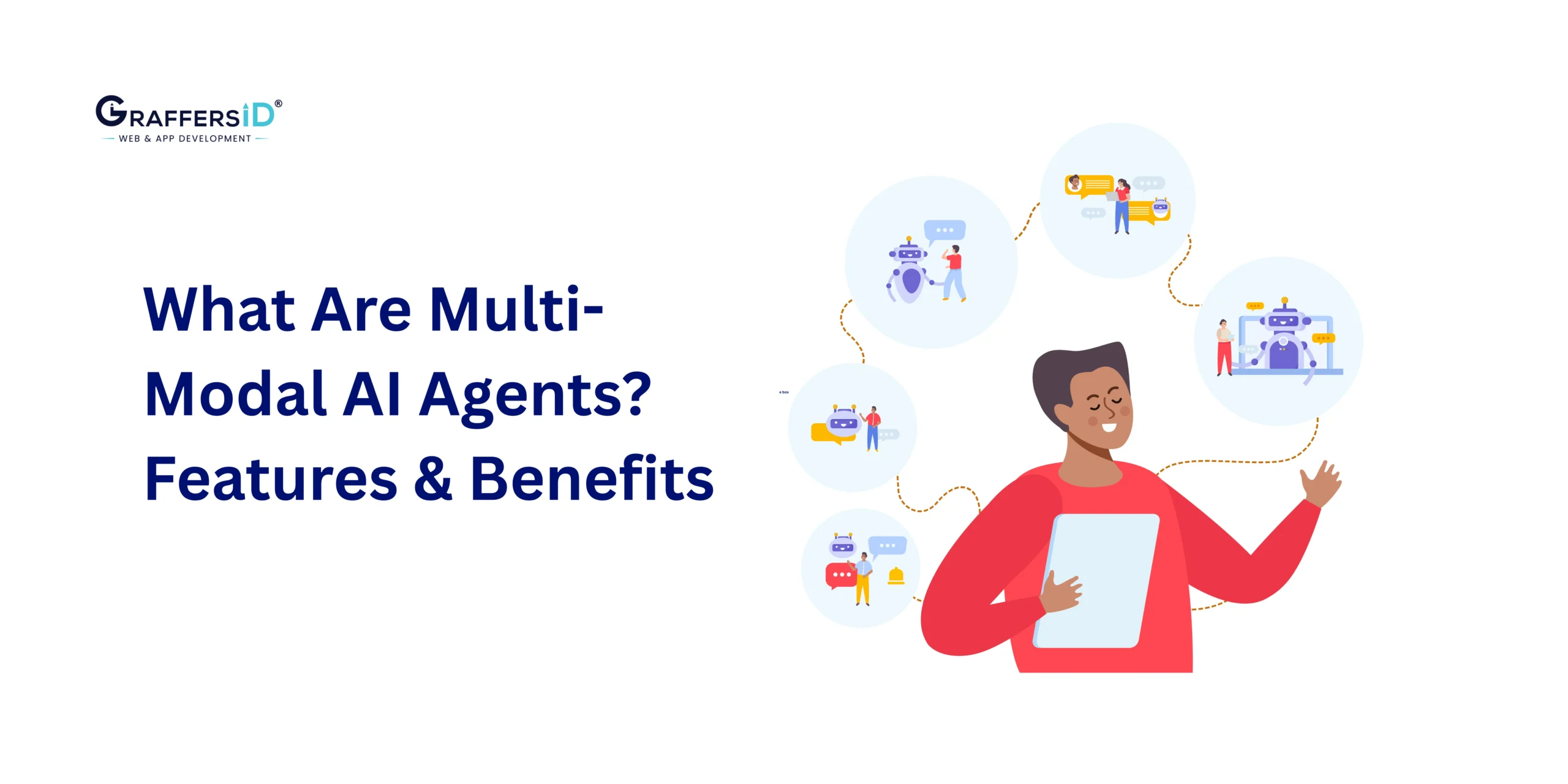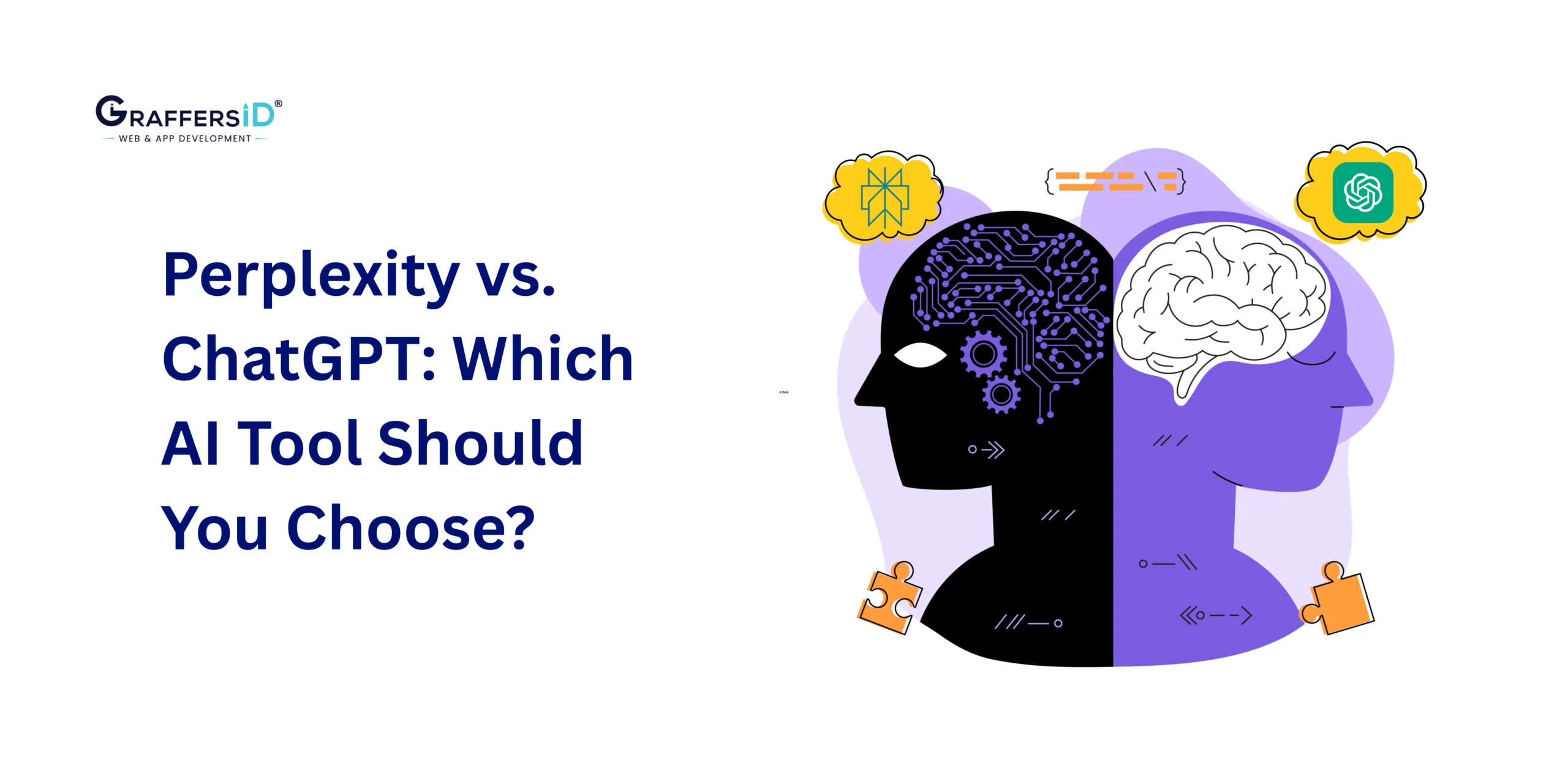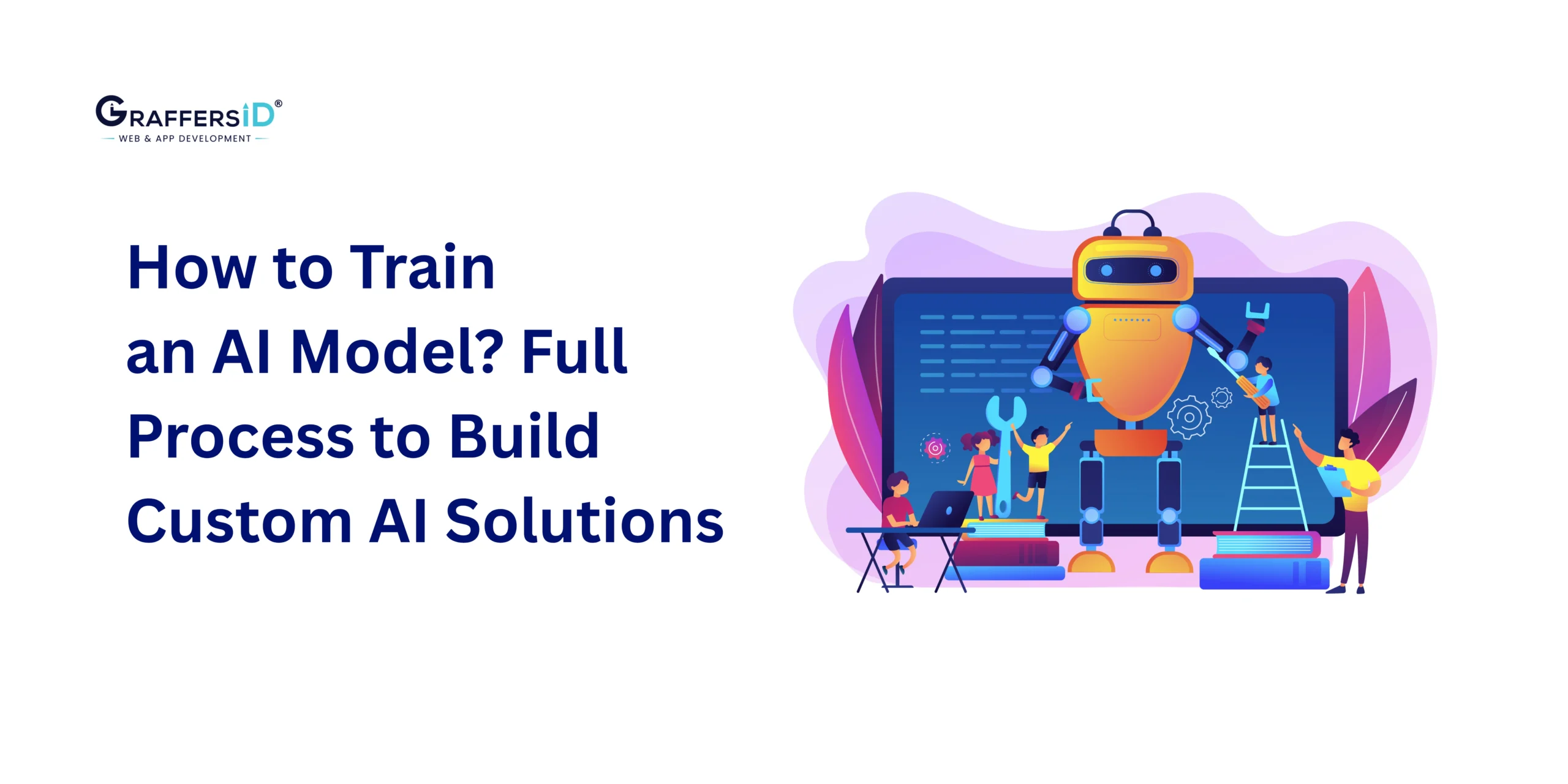Artificial intelligence is a continuously changing field. By 2026, the concept of agentic AI has become an amazing advancement, particularly for IT companies. In contrast to earlier AI models that were primarily focused on generation or prediction, agentic AI acts with purpose. It is capable of independent task planning, decision-making, and execution.
CTOs, development leaders, and software developers are paying attention to this unparalleled ability of AI, who aim to improve their productivity, speed up innovation, and optimize workflows in their software teams.
What is Agentic AI?
Agentic AI is a new approach to artificial intelligence that integrates autonomy, decision-making, memory, and learning, allowing software systems to act with intention and direction instead of simply reacting to input. Unlike conventional AI models that only organize, create, or predict, Agentic AI takes responsibility, defines goals, performs tasks, and learns based on results without ongoing human supervision.
- Divide objectives into smaller tasks: The AI breaks down a big goal, like launching a new module, into smaller, more achievable parts, like code generation, integration, testing, and release.
- Handle issues and modify strategies: If a deployment or a task fails, the AI adjusts its strategy to achieve the goal, such as switching from a failing deployment pipeline to a backup system.
- Independent decision-making: It determines the best course of action based on available information. For example, prioritize a bug fix over a low-priority UI improvement.
- Learn from prior experiences and feedback: With time, the AI identifies patterns and makes better choices, such as recognizing the types of commits that are more likely to cause regressions.
Key Features of Agentic AI
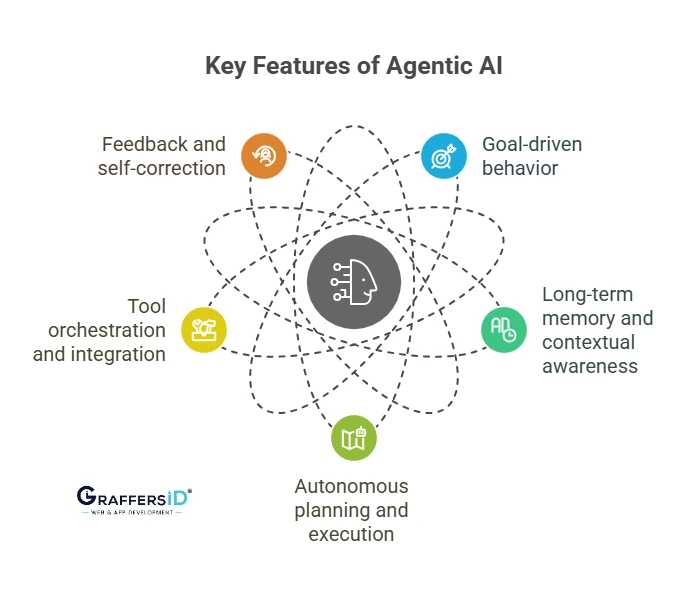
- Goal-driven behavior: It aligns every action with predefined technical or business goals, such as reducing downtime or improving code quality.
- Long-term memory and contextual awareness: Helps make informed decisions by retaining knowledge of previous sprints, code history, team interactions, and infrastructure changes.
- Autonomous planning and execution: Performs tasks such as creating release roadmaps or keeping backups by themselves without needing detailed instructions.
- Tool orchestration and integration: Works smoothly with multiple development tools, like GitHub, Jira, Jenkins, Slack, AWS, and more, carrying out activities as a part of integrated workflows.
- Feedback and self-correction: Evaluates the results of its actions, such as missed deadlines or failed tests, and modifies its approach in order to enhance performance in the future.
Read More: Agentic AI vs. Generative AI: Key Differences CTOs Must Know in 2026
How Does Agentic AI Work?
Agentic AI operates through a tightly integrated system of intelligent components designed to interpret goals, plan, and execute tasks autonomously and learn continuously. Agentic AI is a perfect fit for the dynamic, complex environment of software development teams, as it adjusts dynamically, unlike traditional automation tools that follow fixed scripts.
Core Components of Agentic AI
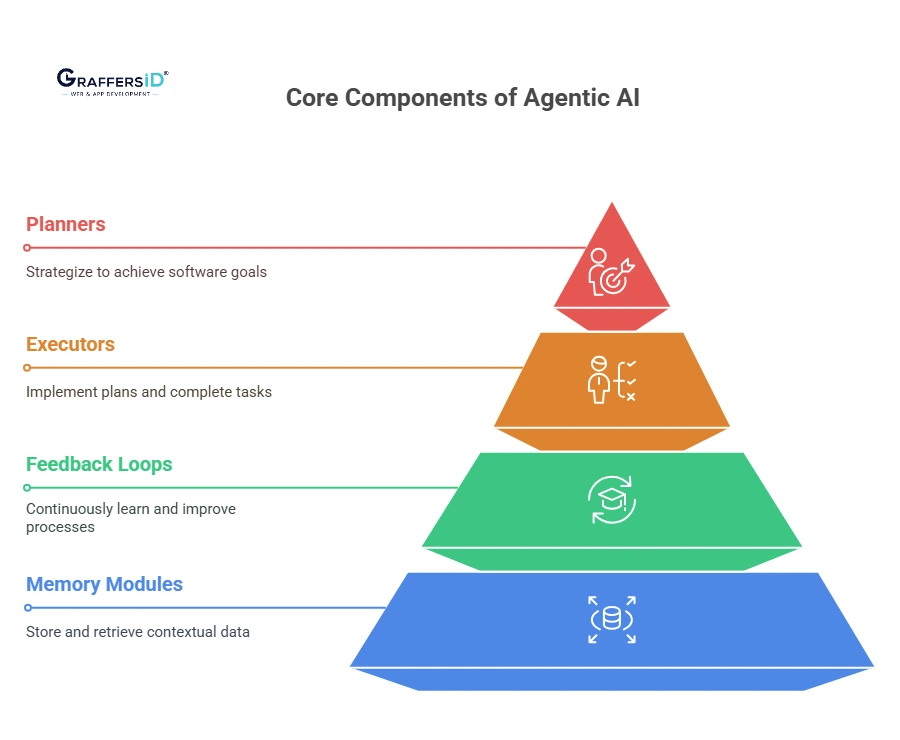
1. Planners: Strategic Thinkers to Achieve Software Goals
These are the system’s “brains” that translate a high-level objective, like speeding up server response times, into a detailed strategy. For example, from optimizing load times to caching, picture compression, and database query updates.
2. Executors: The Hands That Get Things Done
Executors carry out the tasks assigned by the planner. They can run scripts, apply patches, trigger Jenkins pipelines, update configurations in Terraform, or even deploy containers via Kubernetes.
3. Memory Modules: Extended Contextual Storage
This component saves persistent data such as previous error patterns, codebase architecture, deployment outcomes, and even team preferences.
4. Feedback Loops: An Ongoing Learning Process
Agentic AIs continually evaluate the results of their activities and modify their behavior accordingly. Feedback loops monitor metrics such as user reactions, execution times, and task completion success.
Imagine an autonomous Agentic AI that analyzes the backlog, estimates stories, assigns tickets, and syncs with the deployment calendar in preparation for a sprint.
Key Benefits of Agentic AI for IT Companies
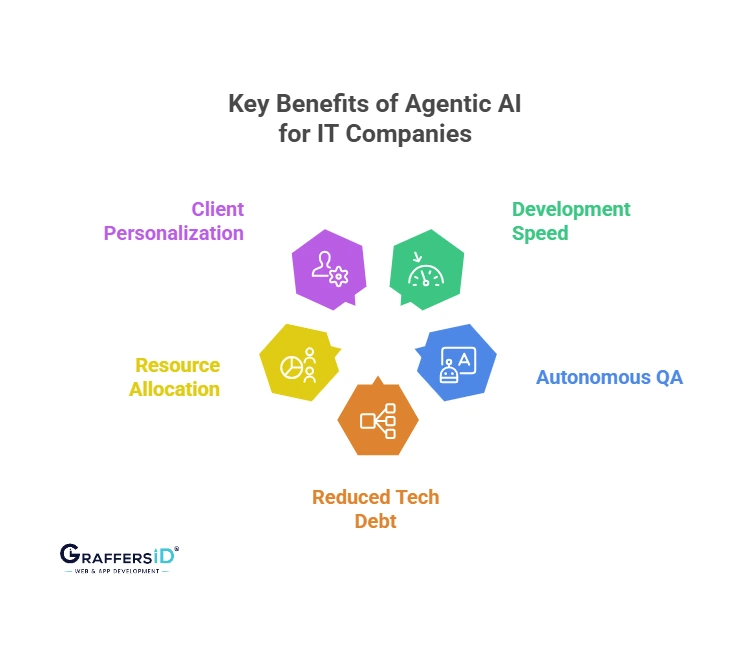
- Enhanced Development Speed: Agentic AI automates routine tasks such as bug triaging, code formatting, and progress tracking. This allows developers to focus more on innovative and complex coding issues, thus decreasing time-to-market for releases.
- Autonomous QA: AI agents generate comprehensive test cases covering various scenarios—unit, integration, regression—often beyond human capability. They continuously run and update these tests, providing high product quality.
- Reduced Tech Debt: By ongoing codebase scanning, Agentic AI detects outdated libraries, unsafe practices, or performance bottlenecks and suggests or automates refactoring to avoid technical debt from accumulating.
- Better Resource Allocation: Managers can delegate routine monitoring and maintenance to AI, reallocating senior engineers to critical path tasks such as architecture planning, innovation, or mentoring.
- Client Personalization: The AI analyzes user behavior data and system logs to detect trends. It then proposes product enhancements or UI/UX adjustments, ensuring that updates align with client needs and increase retention.
Use Cases in the Development Lifecycle
Agentic AI is redefining traditional development stages by inserting intelligent automation and strategic insight:
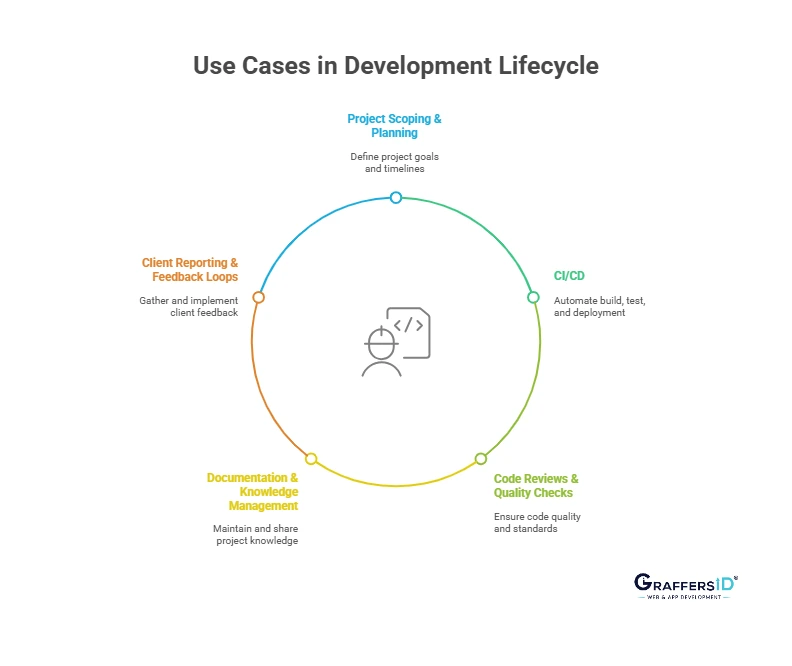
1. Project Scoping & Planning
AI reads through PRDs, user feedback, and past tickets to create a backlog of well-defined, actionable user stories. It also estimates development effort and timelines using past project data.
2. Continuous Integration/Continuous Deployment (CI/CD)
The AI automatically verifies every code change through environment compatibility checks, test execution, and linting. If anomalies are found, deployments may even be paused or reversed.
3. Code Reviews & Quality Checks
Agentic AI reviews design patterns, security issues, and test coverage alongside syntax and formatting. It offers contextual suggestions to make the code easier to maintain.
4. Documentation & Knowledge Management
While developers code, Agentic AI simultaneously documents the logic, API parameters, and usage examples. It can also auto-update documentation as the codebase changes.
5. Client Reporting & Feedback Loops
Agentic AI gathers performance data, error logs, and system usage metrics to generate informative reports for customers. These reports provide recommendations for feature prioritization and highlight areas that need development.
Read Also: How to build an AI voice Agent?
Challenges and Limitations of Using Agentic AI
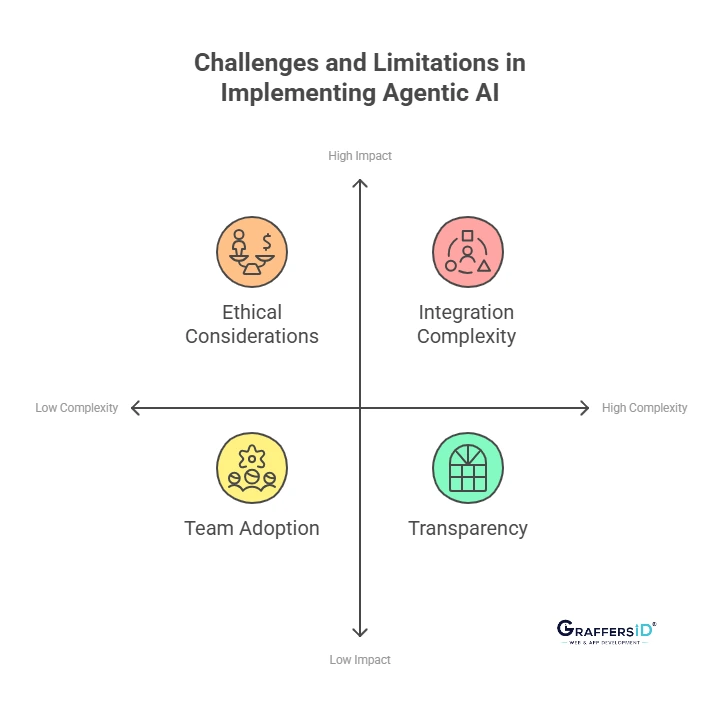
- Integration Complexity: Deploying Agentic AI requires tight integration with existing toolchains. Poor configuration can lead to broken pipelines or duplication of efforts.
- Transparency: AI decision-making logic must be clear and interpretable. Tech leads need to understand why the AI chose one route over another, especially in critical production environments.
- Ethical Considerations: Biases in training data can influence agent behavior. For example, prioritizing features used by one user group over another can lead to unintended discrimination.
- Team Adoption: If the AI’s role is not clearly defined or communicated, teams may feel threatened or resist its integration. This can be mitigated with proper training and change management.
How to Start with Agentic AI?
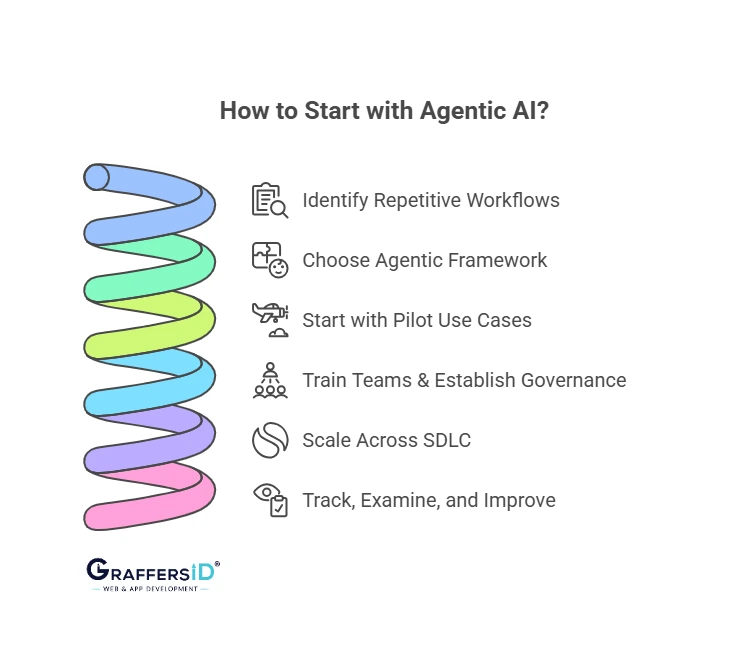
Step 1: Identify Repetitive & Rule-Based Workflows
Audit your software lifecycle and pinpoint tasks that consume developer time but follow repeatable logic.
Examples:
- Automatically move Jira tickets from “To Do” to “In Progress” when a PR is opened.
- Running lint and formatting tools on every commit.
- Sorting and labeling incoming bug reports based on keywords.
Step 2: Choose the Right Agentic Framework
Match the tool’s capabilities to your specific need:
- LangGraph: Great for building visual, logic-based agent flows.
- CrewAI: Ideal for team-like agent coordination.
- Fixie.ai or SuperAGI: Ideal for plug-and-play usage with tool integrations.
Factors to Evaluate:
- Does it support your LLM of choice?
- Is there a steep learning curve?
- How easily can it connect with your DevOps tools?
Step 3: Start with Pilot Use Cases
Begin small. Avoid mission-critical components at the start.
Pilot Use Case Ideas:
- Use an agent to write daily standup summaries from Git activity.
- Let an agent triage incoming GitHub issues based on severity or labels.
- Auto-generate documentation from code commits.
Things to Monitor:
- Time saved by developers each week
- Time savings in resolving issues
- Errors or inefficiencies introduced by the agent
Step 4: Train Teams & Establish Governance
Teams shouldn’t feel like AI is replacing them. Inform and educate them.
Actionable Steps:
- Plan internal training sessions on the limitations, advantages, and behavior of agents.
- Clearly document the steps that agents are allowed to perform.
- Assign an “Agent Owner” to supervise AI-related choices and to monitor results.
Step 5: Scale Across the SDLC
Once confidence is built, scale usage across:
- Design: Agents read PRDs and generate dev tasks.
- Development: Code scaffolding, bug detection, and design pattern enforcement.
- Testing: Create and update test suites autonomously.
- Deployment: Environment validation, CI/CD optimization.
- Maintenance: Detects performance drifts, handles uptime monitoring.
- Client Reporting: Generate usage insights and improvement suggestions.
Step 6: Track, Examine, and Improve
Like any other team member, AI agents require accountability and feedback loops.
Tools to Implement:
- Observability platforms, such as OpenTelemetry and Datadog
- Activity logs: Keep track of every task and its result.
- Performance dashboards: Confidence scores, time saved, and issues avoided.
For example, if an agent modifies a deployment script, the system should notify the user and permit manual approval or override.
Read More: Agentic AI vs. AI Agents: Key Differences, Real-World Examples, and Business Use Cases (2026 Guide)
Future of Agentic AI in Software Development
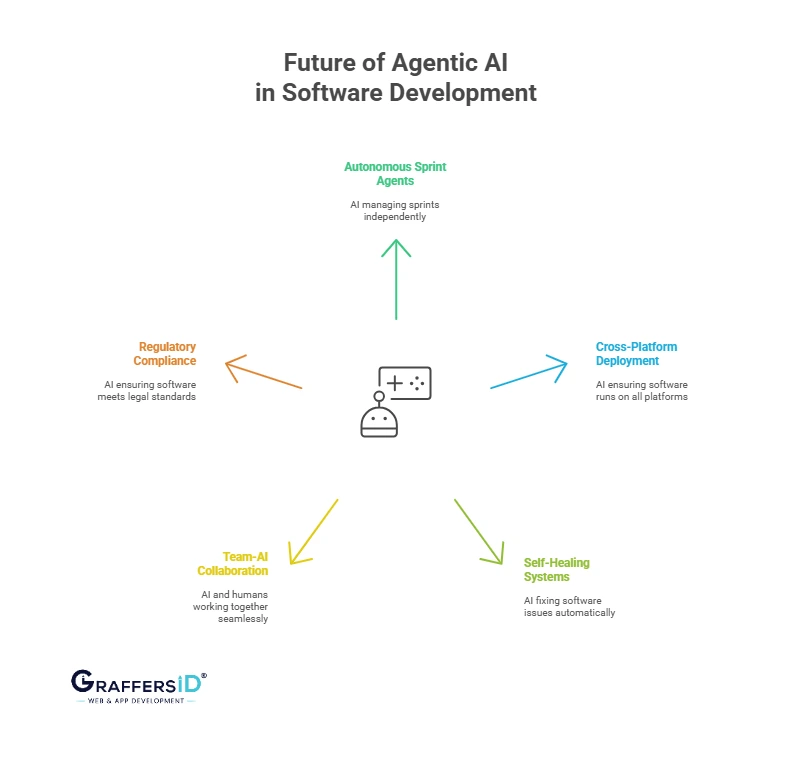
- Autonomous Sprint Agents: AI will not just manage tasks—it will hold daily standups, detect blockers, reassign tasks, and ensure delivery deadlines are met through predictive scheduling.
- Cross-Platform Deployment: Agentic AI will automate packaging, compatibility checks, and deployment for multiple platforms—web, Android, iOS, and more—without developer intervention.
- Self-Healing Systems: AI agents will monitor application performance in real time, detect anomalies like memory leaks or slow queries, and apply fixes, such as scaling up instances or optimizing functions, as required.
- Team-AI Collaboration Models: Developers will work alongside AI partners that suggest improvements in real time. These agents will become embedded in IDEs and Git tools as virtual collaborators.
- Regulatory Compliance Agents: AI will monitor all code changes, log data flows, and ensure compliance with legal requirements such as GDPR or HIPAA. It will even auto-generate audit trails and compliance reports.
Final Thoughts
Agentic AI is impacting how tech companies function today; it is no longer just a futuristic idea. Its responsibilities are growing, ranging from sprint management to system maintenance. Tech decision-makers ought to explore and adopt Agentic AI now, not as a backup but as a co-pilot that revolutionizes the way development teams plan, build, and deliver.
Want to integrate Agentic AI into your development process? Partner with GraffersID to explore tailored AI solutions that align with your team’s tools, workflows, and delivery goals.
